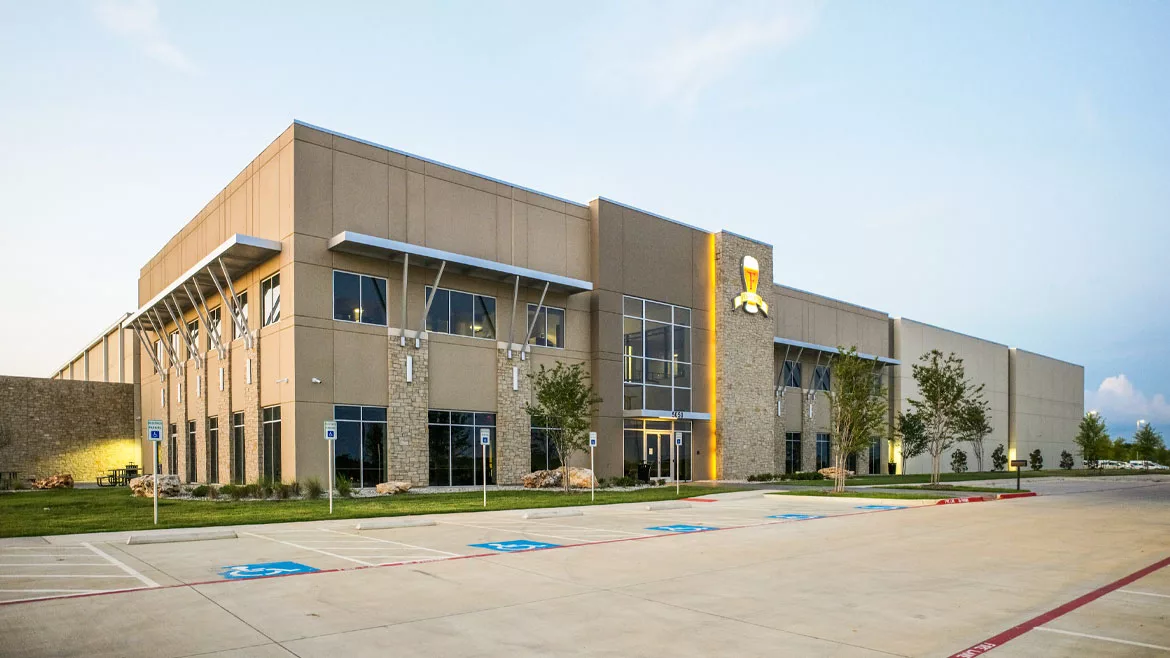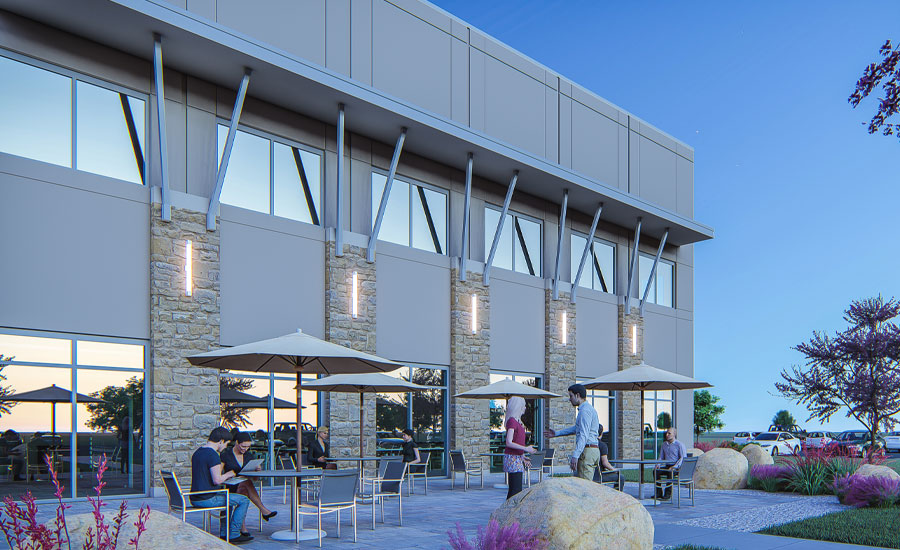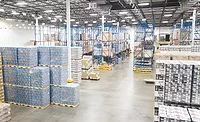New beverage facility builds trend toward continued efficiency
Architectural-led designs help beverage warehouses build for the future

Image courtesy of HDA Architects
As the industry continues to navigate a new “normal,” including the lasting effects of the coronavirus pandemic, supply chain issues, labor shortages and inflation, major beverage players are finding innovative ways to weather the storm and carry on with business as usual. Among those players are operators, who tactfully are expanding on existing beverage facilities or building brand-new ones to ensure continued efficiency, no matter the circumstances, today and in the future.
To build and create continuous efficiency, operators must address the aforementioned issues, which significantly are impacting the market, experts say.
Paul Laman, vice president of beverage at Fairfield, N.J.-based DMW&H, specifically notes labor as a key consideration when building for efficiency.
“With the shortage of labor in the marketplace, new and future beverage facilities must be more labor efficient, so new buildings will need to accommodate more advanced fulfillment and storage technologies,” Laman says. “This may influence the building height, column pattern, floor strength and thickness, number of receiving and loading doors, power requirements and temperature needs.”

Image courtesy of HDA Architects
Another way to build facilities for continuous efficiency is through power, water and wastewater infrastructure, notes Lloyd Snyder, senior vice president at Woodard & Curran, Portland, Maine.
“Infrastructure development is a hot topic right now,” Snyder says. “Optimizing around the right energy sources for the production solution is very important for efficiency.
“A facility’s infrastructure should be built with planning for water reuse and alternative energy,” he continues. “Infrastructure to segregate wastewater streams can be beneficial to economical water reuse treatment processes. Also, a multi-fuel facility strategy (oil, gas and biomass) can help create a more stable, reliable energy cost as commodity costs become more and more volatile.”
Although building a new facility with labor and infrastructure efficiency in mind can result in more reliable energy costs, Synder warns that initially, it can be a costly process.
“To bring these ‘outside services’ to a new facility, significant planning and negotiations are key,” he says. “Community and state economic development arms are increasingly playing a role in bringing a new facility to a community. Incentive packages can help a company reduce the initial capital requirements.”
Another way to help reduce the amount of capital required for a new build is through automation, Chet Willey, owner of Chet Willey Associates, Arlington, Texas, notes. Processes such as automated stretch wrapping and layer picking are becoming increasingly popular, he says. Automation also has increased ceiling clear heights as tall as 36-feet or higher, he adds.
In addition to cost reductions, there are other reasons for the increased usage of automation in beverage warehouses, Woodard & Curran’s Synder says. “Lack of labor and increased demand for shipping goods are two factors that have expanded the need for automation in distribution and cold-storage warehouses,” he says.
“With the shortage of labor in the marketplace, new and future beverage facilities must be more labor efficient, so new buildings will need to accommodate more advanced fulfillment and storage technologies.”
- Paul Laman, vice president of beverage at DMW&H
Building for the future
As facilities become more and more advanced, beverage operations increasingly are turning to experienced architects for building designs that will last for years to come. “[At Woodard & Curran], we believe architectural-lead design build results in a better project for the client,” Synder explains. “The focus is on balancing functionality with costs. Design drives construction costs, but many design-build firms have added cost-estimating professionals that aid in more accurate budgeting for projects.
“Firms, including architectural design firms, develop a highly functional, optimized and efficient plant,” he continues. “This is what is needed for long-term success.”
Jack Holleran, president at St. Louis-based HDA Architects, echoes similar sentiments on the benefits of an architectural-led design build.
“The owner gets all the advantages of the design-build process plus the advantage of having the architect involved with every aspect of the project, from inception to completion,” Holleran notes. “The owner builds a relationship and trust with the architect throughout the phase and is the one that will guide the owner through the construction process. The design of the project ultimately leads to its success.”
These days, architects increasingly are designing buildings with more advanced features than ever before. Some of these amenities include break and lunch areas similar to cafes with open ceilings, comfortable seating, and computer stations for employee use, Holleran explains. They’re also designing buildings with scattered, small meeting rooms, audio visual systems in all private offices, conference rooms and training rooms, even on-site health and fitness centers, he adds.
Looking for a reprint of this article?
From high-res PDFs to custom plaques, order your copy today!






